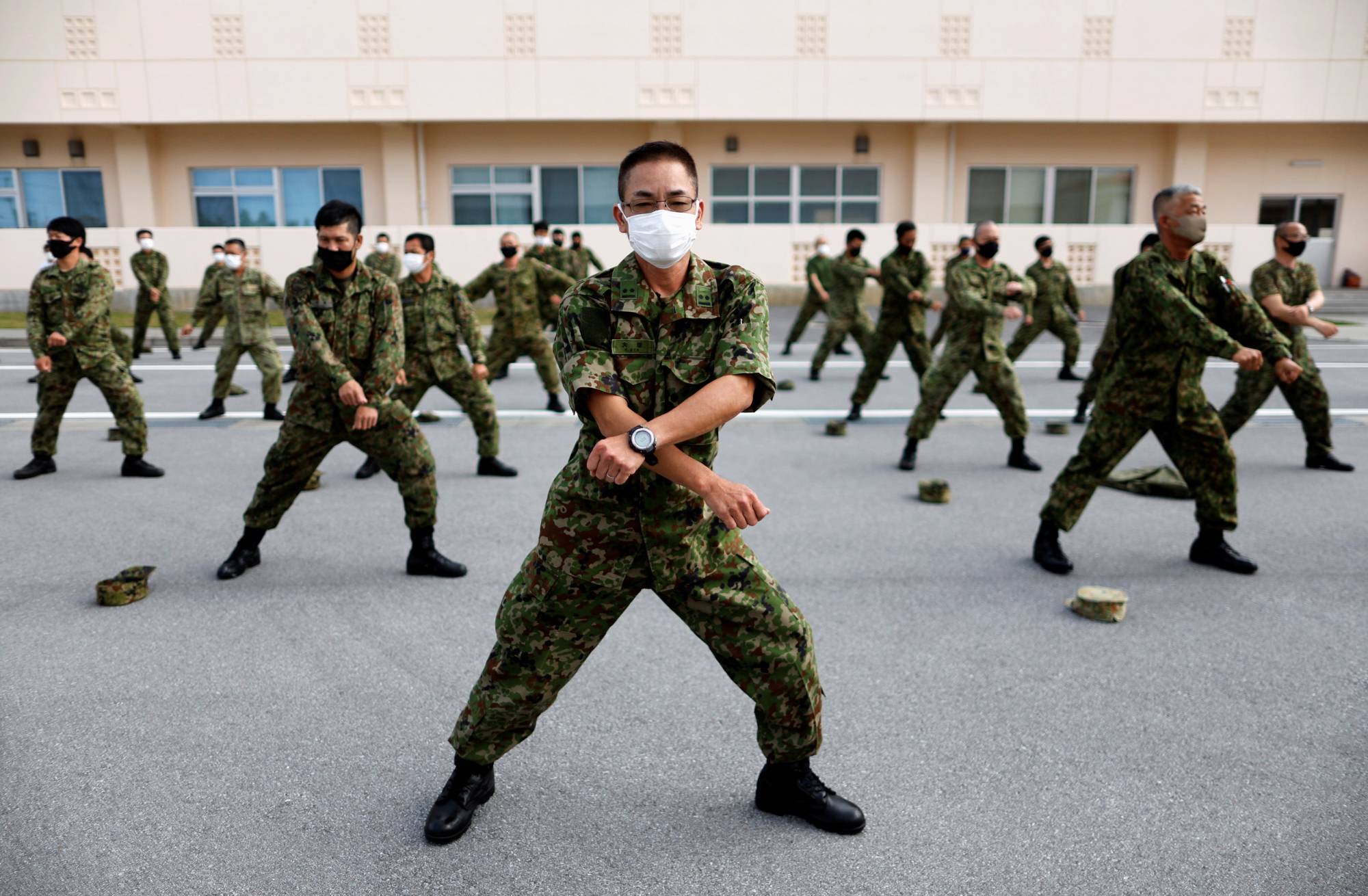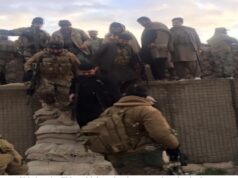Recruitment issues undermining Japan’s military buildup

By
Gabriel Dominguez
Faced with an increasingly fraught security environment, Japan is set to beef up its military capabilities in the coming years. But its plans are being undermined by a perennial issue: recruitment.
Unable to hit its quotas since 2014, the Self-Defence Forces have resorted to a variety of tactics to increase their appeal to potential new recruits. These include pop culture-based advertising campaigns, improved living conditions for recruits and efforts to create a better work-life balance.
Nevertheless, the SDF faces an uphill battle as it struggles with Japan’s falling birth rate and increased competition with the private sector over a shrinking pool of applicants.
Exacerbated by perceptions of a poor quality of life within the SDF and a post war pacifist tradition, these personnel shortages pose a major challenge for the country’s de facto military, particularly as regional tensions surge and Tokyo sets the stage for dramatic shifts in its strictly defence-oriented policy amid growing concerns over China and North Korea.
The enlisted corps is the backbone of the military, and the SDF feels the pain by not having enough of the soldiers, sailors and airmen needed to manage supply chains, repair aircraft and vessels, and conduct the shift work needed to operate and maintain a viable, resilient fighting force.
While the government recently announced its intent to double defence spending by 2027, increases in capabilities with static or shrinking personnel numbers will simply result in the SDF demanding its troops to do more with less, the former alliance manager said.
Such an approach is unsustainable, making recruitment all the more important for actualizing Japan’s broader defence designs.
Shrinking applicant pool
The SDF’s current personnel target is 247,154, but as of the end of last March, the level stood at 230,754, or 16,400 short of that goal. The Ground Self-Defence Force — by far the largest of the armed services — is the most affected, with a shortfall of about 11,000 personnel.
SDF personnel planners do not benefit from a national conscription system like other Asian countries such as South Korea, Taiwan and Singapore, nor a tradition honoring military service like in India .
But the main problem has been finding enough young people to fill the ranks, with the number of Japanese between the ages of 18 and 26 — long the core of the SDF’s recruitment pool — shrinking from 17 million in 1994 to 10.5 million as of October 2021, a trend that is likely to continue over the coming decades.
This pool has been further reduced by the fact that some simply do not meet the physical, psychological and educational recruiting standards for the force.
Another key factor is that Japan’s comparatively low unemployment rate has allowed high school and university graduates to be more selective about their job prospects.
While this is good for the Japanese economy, it poses a further challenge for SDF recruiters, who have to compete with private companies that often offer young adults much better incentives, be it pay, benefits, stability or more comfortable working environments.
Especially in a booming economy, the motivation to choose the SDF as an employer is lost on those who can compete in the civilian job market. Many view SDF work as akin to a hard and dangerous “blue-collar” job that is hard to fill in the employment market.
One of the factors contributing to recruitment in some countries is that military service tends to be a family tradition. While this has also been the case in Japan, some of that tradition has been disrupted by the falling birth rates and aversions rooted in Japan’s experience in World War II.
That said, while the SDF had been viewed with suspicion in the postwar period — which would explain some past recruitment issues — the military is widely regarded in a different light today. Many see it as a useful institution, particularly its numerous disaster relief activities, including the SDF response to the Great East Japan Earthquake and the the ensuing crisis at the Fukushima No. 1 nuclear power plant.
This is why experts point to salary, working conditions and the level of public understanding of the SDF’s national security role as more decisive factors in the personnel issues.
While the SDF is now among Japan’s most trusted organizations and can sell itself on values, values do not pay for a house, develop marketable skills or preserve employee autonomy.
“There is little information out there to convince a young college graduate that joining the SDF is better than getting a job at Toyota.”
Although they are national public servants with stable jobs, SDF personnel earn less than many of their military counterparts in other advanced economies. This is true when comparing raw salaries, but the difference is even starker when one looks at the quality of housing, food and recreation facilities provided to them.
Perhaps more importantly, the SDF does not provide the lifetime employment opportunities associated with the larger Japanese companies.
Another issue lies in how many Japanese perceive the SDF’s role.
“Opinion polls show that a vast majority of Japanese have a positive view of the SDF,” said Koichi Isobe, a retired GSDF lieutenant general. “However, this does not automatically translate into more recruits.”
A key reason for this, he said, is that many still view the SDF’s main task as responding to natural disasters, not of national defence.
“People can easily imagine the role of policemen or firefighters, but when it comes to the SDF, many still have difficulties understanding what role it plays in national defence, so we need to help change that,” said the former commander of the SDF’s Eastern Army.
“A country cannot be defended by its military alone,” he added. “This can only be achieved as a joint effort with the rest of society, so the government should do more to help promote the SDF’s role and mission to the general population.”
Efforts to attract and retain personnel
The Defence Ministry is aware of these issues and says it has been working to tackle them.
A salary increase was implemented in 2020 and another is under consideration. The defence budget for this fiscal year, which began in April, also took aim at the issue, with the government allocating funds to improve the quality of life for SDF personnel by providing better meals, enhanced base infrastructure and improved accommodations, including child-friendly housing with playgrounds.
It has also increased support for spouses, re-employment programs and financial assistance for higher education after recruits complete fixed terms with the SDF.
The ministry is also considering adopting SpaceX’s Starlink high-speed internet communications system on some Maritime Self-Defence Force vessels to enable crew members to better communicate with their families while on long-term deployments.
Another strategy has been to carry out reforms to promote work-life balance, with the Defence Ministry saying in its latest white paper that it anticipates a “significant increase” in the number of SDF personnel with time and location restraints, including those that have child care, nursing care or other responsibilities.
“In light of these changes, the SDF is required to evolve from a conventional organization with an emphasis on homogeneity among the members, into an organization that is capable of incorporating diverse human resources in a flexible manner,” the white paper said.
These steps are also intended to help recruit more women, who currently make up about 8.3% of total SDF personnel. This year’s defence budget also includes funds to renovate the working and living sections for female soldiers in barracks and on ships, provide temporary child care services in case of emergency operations, improve workplace nurseries and promote anti-harassment measures.
Beyond continuing its recruitment activities through high schools, the force has been ramping up ads and information campaigns online, including on social media, and working closely with university career centers and local governments. It has also been targeting people looking to change jobs after raising the maximum enlistment age from 26 to 32.
At the same time, the SDF is seeking to retain personnel, raising the mandatory retirement age of colonels, captains and lower-ranking personnel by one year for each rank. It has also expanded re-enrollment after retirement — up to the age of 65 — and raised the maximum age for recruiting lower-ranked SDF reserve personnel from 36 to 54.
Automation only part of the solution
Nevertheless, even with the best public relations campaign and more flexible job offers, the SDF can’t reverse fundamental demographic trends.
This is why it is increasingly relying on a mix of manpower-saving measures, automation and technological innovations such as artificial intelligence-enabled systems.
In the shorter term, there are two primary effects of the SDF’s recruiting challenge. It is going to cost more to successfully hire and retain core personnel and thus there will be an increased incentive to replace human labor where possible with new technology and more efficient processes.
Both effects are one reason Tokyo feels pressure to increase defence spending, he said, noting that Japan would otherwise simply not be able to maintain current capabilities at the present level of spending, much less increase them.
The SDF is gradually introducing AI into various fields to help with information processing and decision-making, and the force has seen an increase in the use and development of drones. In addition, future radar sites, ships and submarines and other key defence systems are being designed to reduce manning requirements.
Experts point out, though, that further automation will only be part of the solution, as the ultimate problem is not solvable through piecemeal measures.
In the meantime, the personnel shortages will continue to affect the SDF’s operational capabilities.
Like in any business or organization, the consequences of the understaffing are that some goals must be put off and existing staff must work longer hours to cover essential shortfalls.
SDF members tend to be overworked because they don’t have enough people in the services. This can make training, and especially realistic training, difficult to accomplish , that even carrying out essential operations is difficult since there aren’t enough personnel.
Suppose you’re fighting a war and people get killed or injured. You need replacements. If you have too few people to start with, you have a hard time replacing casualties.
Experts warn that the personnel shortfall will likely only worsen with time, unless Japan invests greater resources in its military personnel. Without quality officers and soldiers, the military cannot accomplish its mission, which is why we need to do more to attract more servicemen and -women and prepare them for the characteristics of modern warfare.
Japan will need to invest a significant portion of its planned defence budget increase in recruitment and retention. Otherwise, it’s going to find itself with a high-tech but hollow force just when it needs to be hardening itself against rapidly expanding regional threats.




